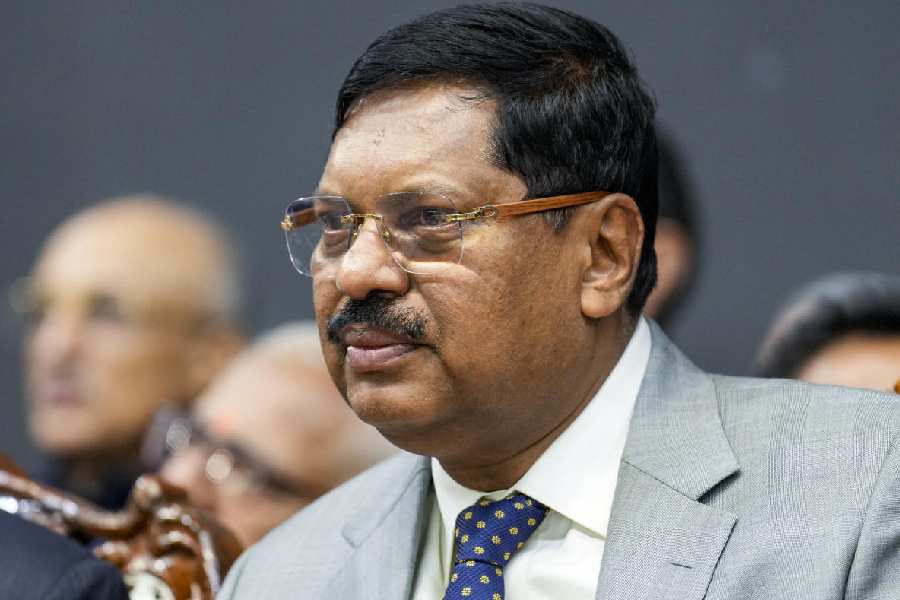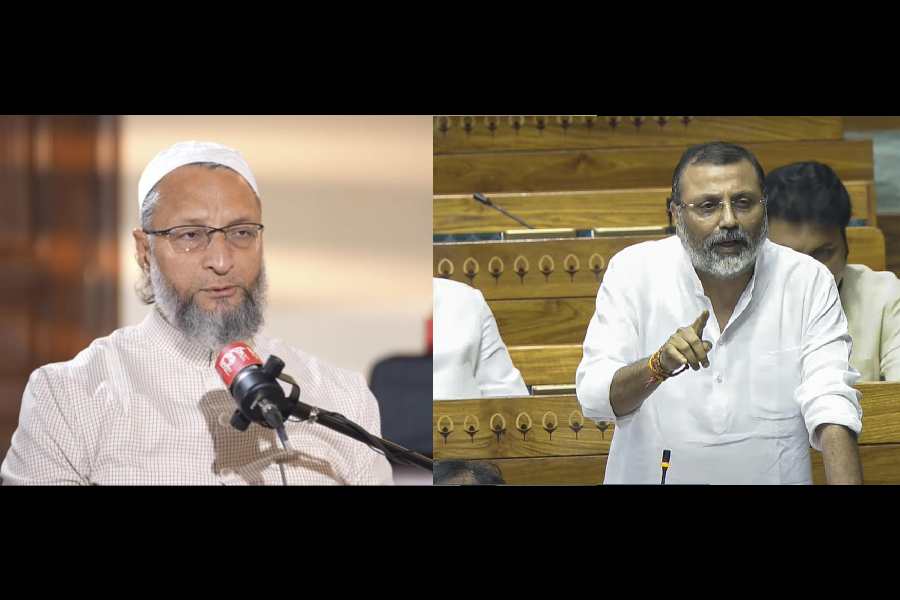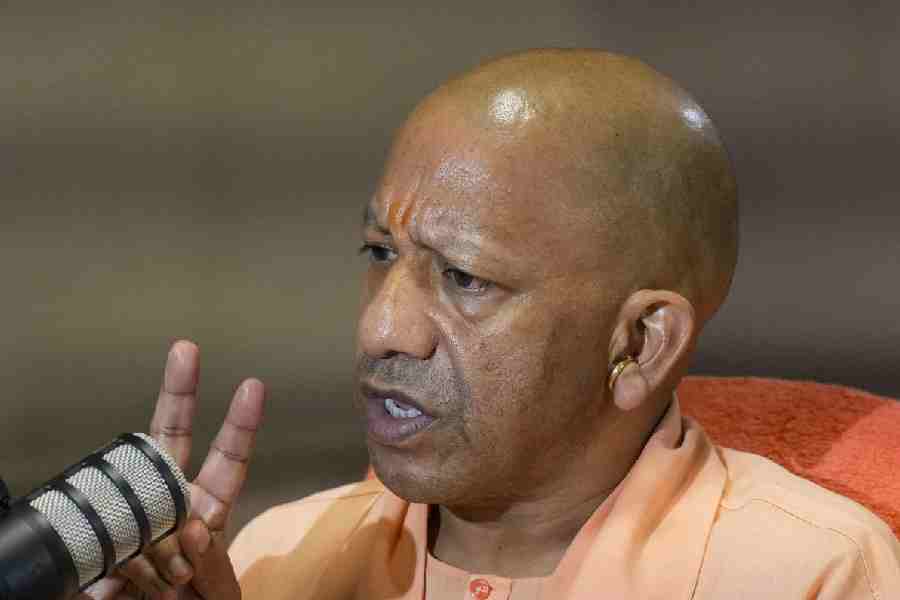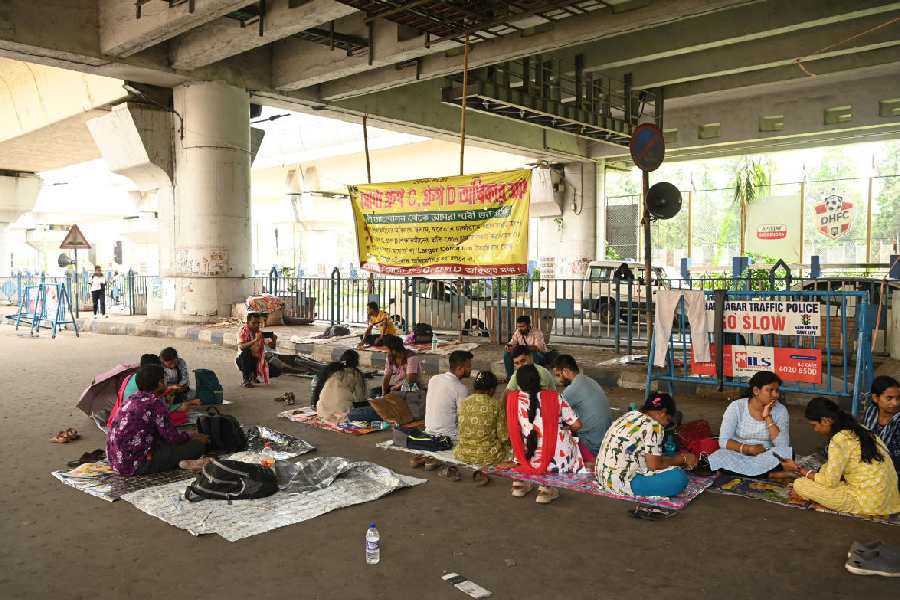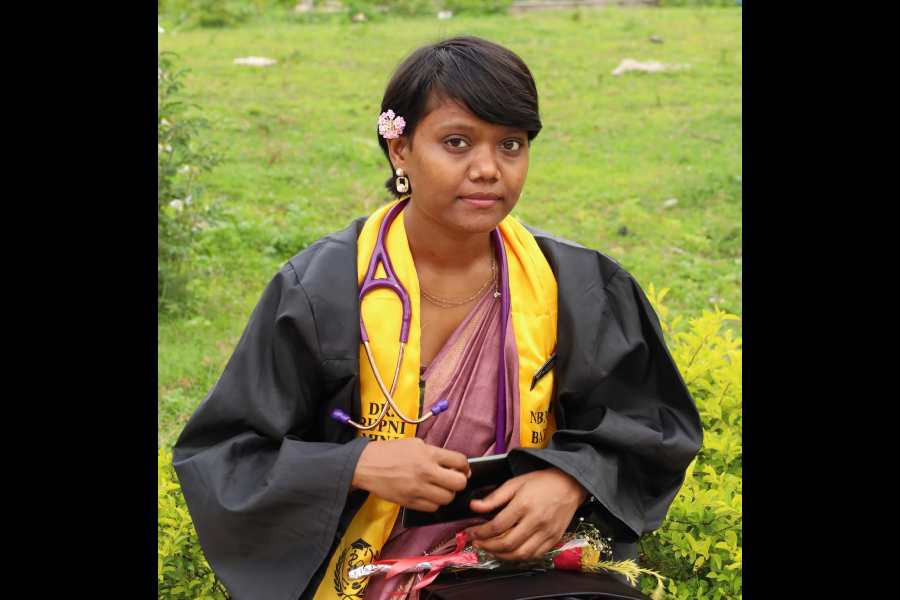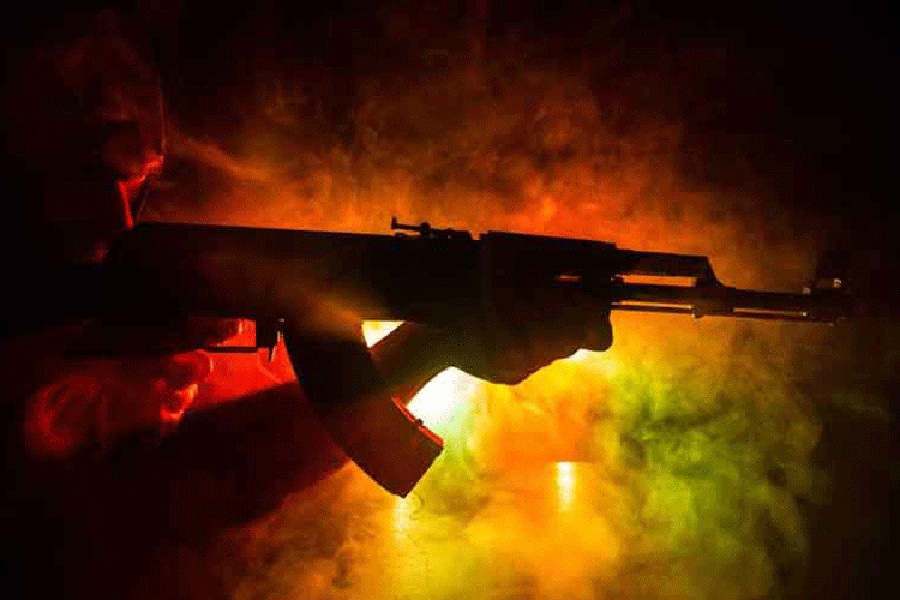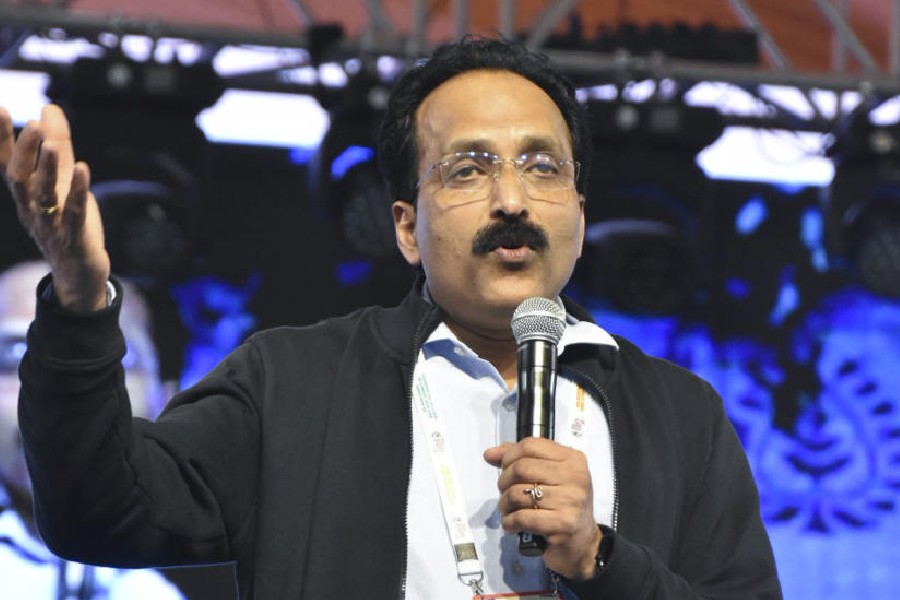 |
| A family pays its last tribute to Jyoti Basu, as the former chief minister’s body passes their Lenin Sarani home, en route to Writers’ Buildings from Alimuddin Street on Tuesday morning. Picture by Sanjoy Chattopadhyaya |
7.30am: Jyoti Basu’s final journey starts from Peace Haven amidst slogans of “Comrade Jyoti Basu amar rahein” from partymen with red flags at half mast.
The cars had been collecting from 6.15am at the mortuary on Rafi Ahmed Kidwai Road. The hearse, which will carry Basu’s body, is ready, the convoy waiting outside.
“I have come to see him one last time. He’s such a large part of our post-Independence history, Bengal wouldn’t be the same without him,” says Srikumar Maitra, 44, a government employee who left his Barrackpore home at 4.30am.
As the hearse rolls out, passers-by are pushed to the pavements. Basu’s aide Joykrishna Ghosh is in the front seat with the driver.
7.45am: About 2,000 partymen join the procession from the Park Street intersection as Basu’s body passes by St Xavier’s College, where he had studied in the 1920s.
8.07am: Basu’s body is brought to the CPM headquarters, Muzaffar Ahmed Bhavan, on Alimuddin Street. Over a hundred Left leaders are present.
8.57am: Politburo members carry the body to a truck, which has replaced the hearse, decorated with large cut-outs of Basu and flowers.
The crowd along APC Road has swollen to over 25,000 at Alimuddin Street. A weeping Ghosh, Md Salim and Amitava Nandy place the body on a platform on the truck.
“Only communists can arrange for such grand farewells,” remarks Prakash Mukherjee, 50.
9am-9.45am: The procession moves slowly along APC Road and then Lenin Sarani, with hundreds of comrades carrying flags at half mast on either side.
“I have waited for two hours to see him,” says Nidhi Rungta, 24, a private bank employee. The crowds are swelling, but not fast enough.
“It’s nothing compared with the million-plus that had turned out for Subhasda’s funeral procession. But it is really early in the morning today and very cold,” says Brotin Roy, 50, a CPM activist.
The convoy parts ways with the procession outside the gates of the Raj Bhavan at Esplanade, as it turns right for Writers’ Buildings, Basu’s workplace for 23 years at the helm of Bengal.
9.58am: The convoy reaches Writers’ Buildings.
10.37am: The convoy reaches the Assembly, via Council House Street.
1.40pm: Serpentine queues winding their way towards the Assembly, coiled up in parts. A near-stampede breaks out at the north gate.
Waiting in queue patiently is Munmun Rehman, who has bought a Jyoti Basu poster for Rs 10. The poster-sellers — there were at least two varieties of posters — are doing brisk business. Munmun, a young housewife from Mominpur, is here for Jyoti Basu, “her leader”.
She says she cannot answer any question about Basu. “What has he done? Well, what hasn’t he done?”
S. Datta Ray, a retired central government employee, says Jyoti Basu gave his generation “freedom”. “Previously, we had things forced down our throat. Uni amader kotha bolar swadheenata diyechhilen, abarodher swadheenata diyechhilen — he gave us the freedom to speak, the freedom to protest on the street.”
3.25pm: The convoy starts from the Assembly for Citizens’ Park. The crowds are surging. A row of huge Jyoti Basu posters appear and the party members carrying these break into song. Mobile cameras go off endlessly.
3.36pm: The convoy passes All India Radio. The deceased leader’s body is displayed at a height that makes it easy for the crowds to see it. The body is wrapped in the Tricolour and covered in flowers.
“Jyoti Basu was our puppet. He would be taken out and shown every now and then — look, here he is! But what will happen now?” asks an onlooker. Thousands of people are joining the procession from all sides. They are mostly party members and supporters.
3.43pm: The rear end of the procession has reached the Mohammedan Sporting Club tent in the Maidan. A group of red hats with the sickle painted on them is bobbing up and down. The crowd is shouting slogans for Basu: “Inquilab Zindabad!” or “Jyoti Basu amar rahein”, but the crowd favourite seems to be the song Internationale, the anthem of international socialism. The Bengali version opens: Jaago, jaago, sarbahara. Many know the words by heart.
As the late winter afternoon sets in amid no traffic and no noise, only a premonition of fog, the chorus sounds almost haunting. “It is a party song,” says a middle-aged woman from Tollygunge. Why did she come?
“It’s Jyoti Basu. Besides, party committee officials keep track of our attendance. We have to account for our absence at such events at the time of renewal of membership,” she adds.
There is a commotion. The crowds make way for a running chain of uniformed men that has CPM leader Biman Bose and state finance minister Asim Dasgupta enclosed within. They are followed by Joykrishna Ghosh in an army car. He is not crying anymore.
3.55pm: The rear end passes the Fort William crossing. “Jyoti Basu is the greatest communist leader I have seen,” says Bikash Basu, a Howrah district committee member. “He had the huge task of re-establishing law and order. Besides, he was responsible for the development of the rural economy.” What about the decline of industry? “The state couldn’t have industry then even if it had wanted to because of the licence raj,” argues the party member. Trade unionism? “The Reserve Bank has said that owners are responsible for the closing of most Bengal factories.”
A baul sings a song in praise of Jyoti Basu.
4.08pm: Victoria Memorial looks deserted against a darkening sky with the sun setting, its grounds almost empty. A group of men, part of the procession, are in a heated discussion. “Jyotibabu was absolutely right about her. She is barbaric. She is indecent.”
 |
| The last lap of Jyoti Basu’s journey, from the Assembly to Citizens’ Park, took close to an hour on Tuesday afternoon as a sea of heads surrounded the cortege along the Red Road route. Picture by Sanjoy Chattopadhyaya |
4.21pm: As the car carrying the body rolls into Citizens’ Park, people start throwing red roses towards it. Mobile phones and cameras are fished out again for the last image of the leader.
A woman’s voice announces that no one should proceed any further. But the crowds push and try to get a peep into the proceedings on the stage in the park. They are barred by security.
4.35pm: The bugle plays and the rifles are fired, followed by angry crows scattering from their nests. Brinda Karat breaks down.
CPM state secretary Biman Bose formally hands over the papers on Jyoti Basu’s body to representatives from the SSKM Hospital. “Jyoti Basu’s last wish was to donate his eyes and body. The eyes were taken the day he passed away at AMRI and today we have handed over his body,” he announces.
“But it was over so fast. We didn’t understand what happened in the end,” says a middle-aged man with a young daughter. “We had a garland for him. It’s still in my bag.... We wanted to be present. That was the main thing,” he said.
4.45pm: The crowds begin to disperse. A part of the crowd starts to sing Internationale again. Sabita Hajra from Uluberia asks her friend what the song is. Sabita has come purely out of her respect for Jyoti Basu, for his “achievements”, which include the maintenance of “peace” in the state. She is a Trinamul supporter.
What about the pessimism about the party dying with the demise of Basu? “That’s apaprachar (false propaganda),” says Sunirmal Pal from Maniktala. “It’s meant to plant doubts in our hearts as well.”
5.09pm: The sun has set. It’s impossible to ignore the symbolism. It’s also impossible to say what tomorrow will bring. The traffic is moving again.


